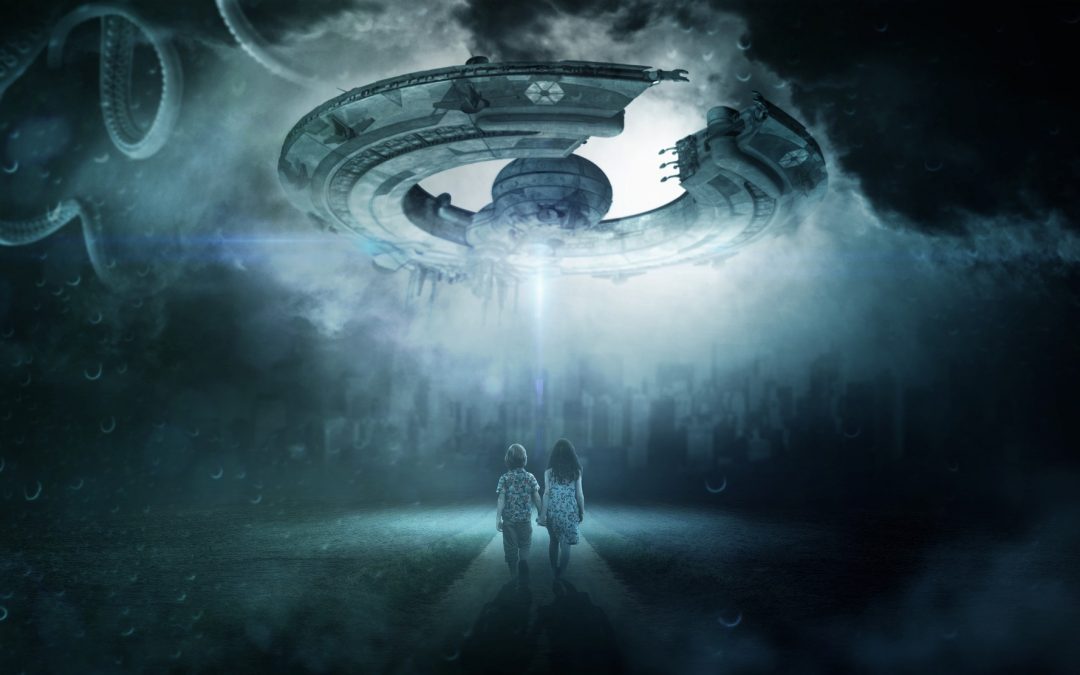
by Jenna | Jan 21, 2016 | Writing Articles
Last week I shared an interview with my colleague Jeff Lyons, master storyteller, Enneagram expert, screenwriter, novelist, and author, about his new book, Anatomy of a Premise Line: How to Master Premise and Story Development for Writing Success.*
This week, I'm sharing a powerful two-part article from Jeff about HOW to craft a premise line that will guide all your story development.
Note: Creative nonfiction writers can also benefit from learning these tools, because biographies, "true stories" and other creative nonfiction adhere to the same storytelling principles as fiction.
Read the article below, or download our Master Your Premise Line Guidebook here:

Five Essential Steps to Crafting Your Premise Line, Part I
by Jeff Lyons
Before a novelist, screenwriter, or creative nonfiction author writes down a word, or thinks of scenes or characters, an idea sparks the imagination and a story is born. Or is it? When inspiration strikes, many writers think they have a story, when in fact they have something else. Untethered by the foundation of a real story, they risk becoming lost in the story woods, writing down creative blind alleys and painting themselves into literary corners.
How can you know if an idea that excites you one day, will have legs over the long course of developing a book, screenplay, or series of books? The only way to know for sure is to master the skill of story premise development. A story’s premise is more than a quick synopsis, or a simple statement defining the theme or hook of a story. It is your canary in the storytelling coal mine and your lifeline as a writer.
A story premise, along with its tool the premise line, is a container that holds the essence of your story’s right, true and natural structure. When properly conceived, it expresses your whole story in one (preferable) or two neat sentences. Finding this premise line is no small task; in fact the process of premise development can be the literary equivalent of water boarding. But when you get it right, the payoff in saved time, money and creative blood, sweat, and tears is worth the agony.
Fortunately, there is a process that can lessen the pain.
There are five essential steps you can learn now to facilitate mastery of the premise process. (For the full seven-step process refer to Jeff’s book Anatomy of a Premise Line.*)
These steps can give you a repeatable and proven methodology for developing any story. This is a critical skill for any writer, because the premise line is a key ally in writing effective agent or publisher query letters, or pitching film production companies. But, the premise line is more than a pitch tool. When you find a premise line that “works,” then you can know with confidence that you have a story that will stand the test of development.
These five steps will guide your writing process, acting as a roadmap to keep your narrative on track and focused, literally cutting development time in half.
After all, if your story is going to go off the rails, isn’t it better to discover that before you get to page four hundred in your novel, or page 150 in your screenplay?
Step 1: Identify the Core Structure of Your Story
A story is defined as: a metaphor for a human journey that leads to change, as played out by the dynamic interdependence of character and plot. A story is further defined by possessing a natural structure, a structure that is not invented by anyone, including the writer. At this basic level, story structure is a natural force like electricity or the wind. The job of the writer is not to impose structure on a story, but to discover what is already there.
This first step helps you identify the seven structure components present in any story—regardless of genre.
- Character: Stories are about us: human beings, even if it is an anthropomorphized version of a human being. And this person (protagonist) is central to the telling of the tale, not tangential, even in ensemble stories. Who is your protagonist?
- Constriction: The person at the focus of the story is constricted in some way. Some “personal problem” haunts them, drives them and motivates them. Try to get a sense of what your protagonist’s problem is and sense how it triggers them into action. The constriction is usually activated by some initiating event that forces the protagonist to move from where they are at the start of the story, toward a new path of action (the adventure).
- Desire: The protagonist wants something tangible. They don’t want to be happy, they don’t want world peace and they don’t want to be one with the Universe. They want the money, the girl, or to find the radioactive dirty bomb. They want to get something by the end of the story; what is it?
- Focal Relationship: Stories are conversations, not monologues. No protagonist exists in a dramatic vacuum. Who is the protagonist talking with throughout the middle of the story? What relationship is the focus of the protagonist’s attention? This relationship will be the engine that drives most of the drama in your story, even in multiple point of view stories.
- Resistance: More than a personal constriction, there is also the sense of serious, external pushback. Something opposes the goal-seeking of the protagonist, and this force creates dramatic friction. Ideally, this is a person and not some abstract force like Nature or the internal angst of the hero-heroine. This is the central opposition and is bent on stopping the protagonist from getting their desire fulfilled. Who is this opposing force?
- Adventure: Entropy is defined as the tendency of all things to move toward disorder and chaos. This is what has to happen in the middle of every good story. Along with resistance/opposition, focal relationship, desire, and constriction try to sense the messiness that will become the middle of your story, i.e., the twists, turns, reversals, and general mayhem that will occur. This is the adventure.
- Change: You may not see the exact endpoint of your story, but you can sense that your protagonist will not end up where he or she began. While the details of the middle may be a blur, there is a sense of a beginning, middle, and an end. If there is such a sense, then there must be something present that allows for these three points. That “something” is character change. Is this change for the better or worse? Does your protagonist evolve or de-evolve?
These are the seven components of the any story’s core structure. If they are present, then you have a story. If they are missing, or vague, or so muddled it feels like pulling teeth to find them, then you don’t have a story. You have something else, and that “else” is a situation.
Step 2: Assess Whether You Have a Story or a Situation
What’s the difference between a situation and a story? The main difference is that the 7-core structure elements are missing.
But there is a quick way to identify a situation without worrying about a structure analysis. Any situation has these five conditions:
- A situation is a problem or predicament with an obvious and direct solution.
- A situation does not reveal character; it mainly tests problem-solving skills.
- A situation has no (or few) subplots, twists, or complications.
- A situation begins and ends in the same emotional space as it started.
- A situation has a weak, underdeveloped, or nonexistent moral component.
A good example of a situation is the classic twenty-something kids caught in the cabin in the woods with the monster outside that’s going to eat them. The focus of these stories is all about who’s going to die, how bloody is it going to get, and who will get out alive. Protagonists don't change; there is no deeper message in the material, other than figuring out how to not get eaten; and characters are tested for their ability to avoid danger, rather than having their characters tested. Situations are parts of stories; they are not stories themselves. These five conditions are not present in a story, so if you see them, then you know what you’ve got.
If you find that you have a situation and not a story, then you can reevaluate your idea to see if you can develop it into a story using Step 1, above, or decide to simply take the "situation" route, which would not require the development of a premise line.

Read on for Part 2 of this article series, where Jeff will guide us through Steps 3 through 5:
- Step 3: Map the Core Structure to the Premise Line Template
- Step 4: Finalize the Premise Line
- Step 5: Test the Premise Line with Objective Readers
Thanks, Jeff!

 About Jeff: Jeff Lyons is a published author with more than 25 year's experience in the film, television, and publishing industries as a writer, story development consultant, and editor. He is an instructor through Stanford University's Online Writer’s Studio, and lectures through the UCLA Extension Writers Program, and is a regular presenter at leading writing and entertainment industry trade conferences.
About Jeff: Jeff Lyons is a published author with more than 25 year's experience in the film, television, and publishing industries as a writer, story development consultant, and editor. He is an instructor through Stanford University's Online Writer’s Studio, and lectures through the UCLA Extension Writers Program, and is a regular presenter at leading writing and entertainment industry trade conferences.
Jeff has written on the craft of storytelling for Writer’s Digest Magazine, Script Magazine, and The Writer Magazine. His book, Anatomy of a Premise Line: How to Master Premise and Story Development for Writing Success* is published through Focal Press and is the only book devoted solely to the topic of story and premise development for novelists, screenwriters, and creative nonfiction authors. His second book, Rapid Story Development: How to Use the Enneagram-Story Connection to Become a Master Storyteller, is due in 2016. Visit him at www.JeffLyonsBooks.com and follow him on Twitter @storygeeks.
* Amazon affiliate link

Want the Workbook Version? Download our Master Your Premise Line Guidebook here:

by Jenna | Oct 9, 2013 | Writing Articles
 Today's article is a guest post by story and Enneagram expert Jeff Lyons of StoryGeeks.com. His article touches on a often overlooked aspect of story development that many writers miss and their story structure suffers as a result: their main character's "moral problem".
Today's article is a guest post by story and Enneagram expert Jeff Lyons of StoryGeeks.com. His article touches on a often overlooked aspect of story development that many writers miss and their story structure suffers as a result: their main character's "moral problem".
Jeff will be teaching us more about how to identify a character's moral problem in his upcoming workshop here in Berkeley, California (I'm co-hosting) on October 26 and 27 on his method of Rapid Story Development. We'd love to have you join us if you'd like to learn more.
Now here's Jeff's article:

The problem is moral
Hands down, the most important and most overlooked story structure element all writers either miss altogether or bungle is the moral problem. This pesky problem is not just a nice perk -- it is a make-it-or-break-it story structure component of any good story.
The moral problem is the hole in the heart of your protagonist. He or she starts off the story in some pickle, some predicament of their own making, ideally brought about by the very moral problem to which they are oblivious. This problem is making them act badly in the world. They are hurting people emotionally, mentally, and maybe even physically due to this lack. It’s the hurting of others that make it a moral issue, and not just a psychological one (the distinction is about hurting others versus hurting oneself). The character needs to learn some lesson about how to live in the world so that they no longer hurt others; some lesson that elevates them (hopefully, but not always) to be a better person. They learn that life lesson that makes them moral again.
Good stories have protagonists with this hole in their heart. And the best stories rip out the protagonist’s heart and then somehow heal it again, before the heart gets put back inside (I’m speaking metaphorically, of course -- unless this is a Clive Barker horror story).
How to find the moral problem
So, the question becomes: how does a writer figure out how to find one of these heart-holes? How do you assure that your protagonist has a meaningful moral problem and an equally meaningful growth-moment at the end of the story where they see the error of their evil ways? Some writers have a natural gift for this and flawed and tortured protagonists come to them as gracefully as flight to an eagle. For others (i.e., most of us) the process of finding a good moral problem is more like trying to find a taxi on a rainy night.
The good news, however, is that there is a tool that any writer can use to help them crack this problem, regardless of their natural gifts. That tool is called the Enneagram. The Enneagram is a powerful archetypal system that describes the nine core personality drives underlying all human behavior. Each of the nine drives is rooted in thoughts, feelings and actions that largely determine how we interact with the world, for good or ill. Everyone has an Enneagram type -- including fictional characters and stories themselves. Writers have used this tool for many decades to develop multi-dimensional characters, but it can also be used as a story development too, when coupled with story structure principles. It is this relationship between the Enneagram and story structure that gives writers a doorway to finding the most dramatically powerful moral problem for their protagonist.
What's your character's poison?
Let’s take an example and walk through the problem as a point of illustration:
You just wrote the movie The Verdict. Frank, the protagonist, is a ambulance-chasing, alcoholic lawyer who is constantly looking for the next sucker to scam into hiring him. You know he’s a drunk. You know he’s in pain. But what’s his moral problem? Is his alcoholism the moral problem? Alcohol hurts lots of people. Is his pain the moral problem? If so, what’s the pain? How do you figure out which it is? Writers spend lots of time caught up in this maze of questions and confusion.
Enneagram to the rescue. Each of the nine Enneagram personality styles has something called a "poison". This poison is the hole in the heart. It is the thing that poisons everything they do, everything they feel, everything they think. So, what’s poisoning Frank? Certainly alcohol is, but that’s mostly just hurting him. It’s not hurting other people. What he’s doing that’s hurting others is that he is using them. He sees people as targets, not people. So, we have the answer, right? He’s using people. That’s the moral problem, right? No, not quite. That’s what he’s doing; that’s not why he’s doing it. The moral problem is the motivation, the thing causing the using.
The Enneagram poison can help you quickly answer this question and find the real moral problem. Of the nine personality styles, the 3rd style ("The Achiever") is the one who has the poison of secretly feeling that they have no personal worth or value. This fits Frank’s actions to a tee. For him, people have no value; they’re things to be used. He ultimately feels this because deep down he believes he has no value or worth himself and therefore no one else has value either. Over the course of the movie he learns that, indeed, not only do people matter, but that he himself matters and he can make a difference in the world.
And so not only does the Enneagram technique of looking for the poison explain the motivation behind the protagonist's immoral behavior, it also points to the final self-revelation at the end of the story, where the hero or heroine realizes how to heal the hole in their heart. In this case, Frank realizes he has value and so do other people. He is able to make a new choice as a result.
Moral problem and story structure
As a writer, having this key piece of information -- a clear moral problem -- is critical for you to not only address your main character's development and arc, but also to guide you on how best to structure your story so that key story beats, like the inciting incident, low point, and final climax, are all driven by the engine of the protagonist's moral problem.
This is a deep subject, but a critical one for any writer. The moral problem can make or break your story, and the Enneagram can help you rapidly navigate the difficult questions that might otherwise hang you up and drag out the development process.
If you'd like to learn more, join us in Berkeley on October 26 & 27. Early registration ends TOMORROW, Thursday, October 10. Find more and register here: http://RapidStoryDevelopment.com
Your turn
As always, we love to hear your thoughts in the comments.
Warmly,

You may also be interested in:
Thanks for reading.

by Jenna | Oct 2, 2013 | Writing Articles
 In the third and final session of my interview series with Enneagram and story development expert Jeff Lyons (recordings no longer available), we talked about "Bridging the Gap from Motivation to Structure With the Enneagram." Today's post is a recap of what we discussed.
In the third and final session of my interview series with Enneagram and story development expert Jeff Lyons (recordings no longer available), we talked about "Bridging the Gap from Motivation to Structure With the Enneagram." Today's post is a recap of what we discussed.
His process for "bridging the gap" from premise line to character to story is quite fascinating, and he illustrated it using a breakdown of The Great Gatsby according to the Enneagram.
Bridging the gap
Here's an overview of the process:
- Step 1. Write out your premise line and log line.
(See the last post for more on premise line development.)
- Step 2. Define the moral problem that best illustrates the story's premise line.
(In Gatsby, Nick focuses on trying to fit in and be liked, he isn't being his truest self, which is a form of lying.)
- Step 3. Look for the Enneagram type that best represents the motivations (not behaviors) of someone with that moral shortfall.
(Nick most aligns with the Enneagram type 9.)
- Step 4. Study the integration and disintegration points for that type to identify what the character is capable of and what they're greatest opponent might be.
(Points 3 and 6, respectively.)
- Step 5. Explore the entertaining moral argument possibilities between those two types.
(Can you succeed and achieve without giving up your soul?)
- Step 6. Brainstorm about the communication styles, "pinches", and blind spots of each of those two types.
(Nick has various challenges that Gatsby can poke at and wreak havoc with.)
- Step 7. Map your story using these Enneagram components and correlate them with the visible structure components we discussed last time.
(This includes the protagonist, moral problem, chain of desire, focal relationship, opposition, plot & momentum (midpoint complication, low point, and final conflict), and evolution/de-evolution and is the more complex step where the story is broken down into a greater level of detail).

Your turn
Have you considered using the Enneagram in your story development? Will you consider using it in the future? We'd love to hear your thoughts in the comments.
Warmly,

You may also be interested in:
Image by © Royalty-Free/Corbis

by Jenna | Oct 1, 2013 | Writing Articles
 In the second class of my interview series with Enneagram and story development expert Jeff Lyons (recordings no longer available), we talked about "The Critical Importance of Premise Line Development." Today's post is a recap of what we learned.
In the second class of my interview series with Enneagram and story development expert Jeff Lyons (recordings no longer available), we talked about "The Critical Importance of Premise Line Development." Today's post is a recap of what we learned.
Jeff started off by talking about the importance of being clear about what you're writing is about a situation or a story:
- A story is about a person on a journey of change, where they are trying to achieve a goal or attain a desire and have a revelation about themselves at the end. Stories include relationships, because, as Jeff says, "Stories are conversations, not monologues."
- A situation, on the other hand, is usually some kind of problem or predicament with a solution that tests a protagonist's problem-solving skills but doesn't reveal character. Few, if any, subplots, twists, or complications are required to solve the problem, and it ends in the same emotional emotional space it began in. Standard genre beats may still evident but not the deeper underpinnings of story structure.
While Jeff doesn't suggest that story is better than situation or vice versa, he says that they require different building blocks to successfully deliver them. A story will rely on deeper story structure components, while a situation will rely on entertainment value, great set pieces, and good dialogue, but won't reveal character or be driven by a moral problem or theme.
And what is story structure?
Jeff defines story structure differently than the way most of us have learned to think of it. Most of us think of things like inciting incidents, turning points, mid-points, climaxes, and resolutions as story structure. Jeff describes these as "story beats" and says that most writing systems that purport to be about structure are actually focused on these typical beats and are missing the deeper, natural structure implied by both premise development and character motivation.
Getting from idea to premise line
When a story idea first arrives, it often comes as an "undifferentiated mass". It's a collection of swirling notions and intuitive instincts that don't translate yet into a clear organized story structure.
Jeff uses premise line development as a tool to begin to decipher the fuzzy, abstract ideas into a more concrete, contained story -- the nascent beginnings of story structure. He compares it to stepping down electricity from the power plant into a useable form in a residential setting. It has to go through transformers to make it available at a functional level. The premise line is the first step in translating from that vague mass of ideas into something resembling a story.
The way that he does this is by using seven core elements to begin to tease out the components of the story and shape them, including:
- Character -- do you have a sense of a character who will be central to the story?
- Constriction -- what happens that pushes the character off the line they're on at the beginning of the story?
- Desire -- what does this character want? At this point, we're not talking about something specific or tangible, that comes later, but rather a sense of a core desire or motivating force.
- Relationship -- who is this character in relationship with? (Again, stories are conversations.)
- Resistance -- what is the push back or opposition that stops the main character from getting what they want?
- Adventure and/or Chaos -- what is the adventure or chaotic experience the character has that leads them to the epiphany at the end?
- Change -- this is the dramatic epiphany the end -- how the character changes as a result of their experiences.
Moving from premise line to visible structure
Once you've identified your premise line, you can then move to a more "visible structure" for the story. This is a process of taking what you've started with and beginning to develop and flesh out the pieces of the story more deliberately. At this stage of the process, you'll make the following shifts:
- The character becomes the protagonist.
- The constriction becomes the moral problem of the protagonist. (This informs the inciting incident.)
- The character's desire becomes a chain of desire (a sequence of goals or desires all related back to the character's core desire).
- The relationship becomes the focal relationship for the story, the person the protagonist experiences the journey with.
- The resistance becomes the central opposition. At the outset and premise level, you may just have a sense of an opposing force. At this stage it would become personal, dramatic, and/or personified.
- The adventure/chaos becomes the plot and momentum of the story through the second act. (This is the part of the story that includes the typical story beats, like midpoint, low point, and climax).
- The change is the evolution or de-evolution of the protagonist.
Bridging the gap using the Enneagram
In order to make the transition from that undifferentiated mass of the original idea to the more visible structure of the premise line all the way into a visible, clear structure, Jeff uses the Enneagram to help identify the specifics for each one of these elements, such as:
- The best protagonist for the story, based on the personal change the story is designed to illustrate.
- The best opposition or antagonist for the story, designed to help provoke the protagonist into that change.
- Brainstorming and understanding the protagonist's core desire based on their Enneagram type, to design a chain of desires that the character seeks that drives the story forward.
- The best allies or focal relationships for the protagonist.
- The best likely inciting incidents, turning points, midpoints, low points, and battles/climaxes that will stimulate your specific character and/or be driven by him/her to the final outcome of the story.
The Enneagram doesn't tell us the ONLY options for each of these, but rather suggests the best form for each of these elements. Then as the writer, it's up to you to begin to craft the specific story details to deliver that. (Form follow function, after all.)
For instance, at the broadest level, an Enneagram Three seeks approval from the outside as a way of validating themselves, but what they really need is to have their own sense of value and sense of self. So a story about a Three would be designed to play out that journey in a visual, visible metaphor organized around the ideas of approval-seeking as the constriction, taking an action that would cause a loss or challenge based on that approval-seeking as an inciting incident, to a low point where the Three finally realizes they are sacrificing themselves on the altar of approval and giving up everything to do so, all the way to a climactic moment where the Three stops looking outside themselves for approval and decides to find it within.
At a more specific level of story detail, those ideas could play out with a businessman who will never say no to a contract, trying to please everyone and perform by juggling and obfuscation, but he finally says yes to too many projects and the house of cards he's built around himself comes crashing down. He would then realize he needs to choose projects and work that HE values, and by so doing, recognize his OWN inherent value. It's HIM that makes the projects successful, not the game he's playing.
And of course, we can get even more specific from there, as well as fleshing out the details of his supporting relationships and opposition.
You may also be interested in:

by Jenna | Sep 27, 2013 | Science Fiction, ScriptMag Articles
Here's a new article over on ScriptMag, an interview with storyteller Jeff Lyons about the Enneagram and sci-fi.
As a sci-fi screenwriter, I’m interested in more than just big tent pole movies. I want to write and see sci-fi stories with heart, stories that make me feel, stories that reveal character. I’ve always been a huge fan of Firefly and Serenity for that reason, and Joss Whedon continued to impress me particularly… [read more at ScriptMag]
Image by Comfreak from Pixabay

![]()
![]()
 About Jeff: Jeff Lyons is a published author with more than 25 year's experience in the film, television, and publishing industries as a writer, story development consultant, and editor. He is an instructor through Stanford University's Online Writer’s Studio, and lectures through the UCLA Extension Writers Program, and is a regular presenter at leading writing and entertainment industry trade conferences.
About Jeff: Jeff Lyons is a published author with more than 25 year's experience in the film, television, and publishing industries as a writer, story development consultant, and editor. He is an instructor through Stanford University's Online Writer’s Studio, and lectures through the UCLA Extension Writers Program, and is a regular presenter at leading writing and entertainment industry trade conferences.

 Today's article is a guest post by story and Enneagram expert Jeff Lyons of StoryGeeks.com. His article touches on a often overlooked aspect of story development that many writers miss and their story structure suffers as a result: their main character's "moral problem".
Today's article is a guest post by story and Enneagram expert Jeff Lyons of StoryGeeks.com. His article touches on a often overlooked aspect of story development that many writers miss and their story structure suffers as a result: their main character's "moral problem".


